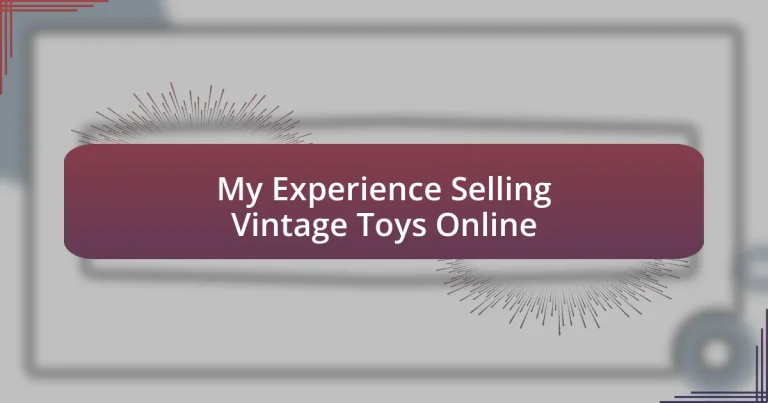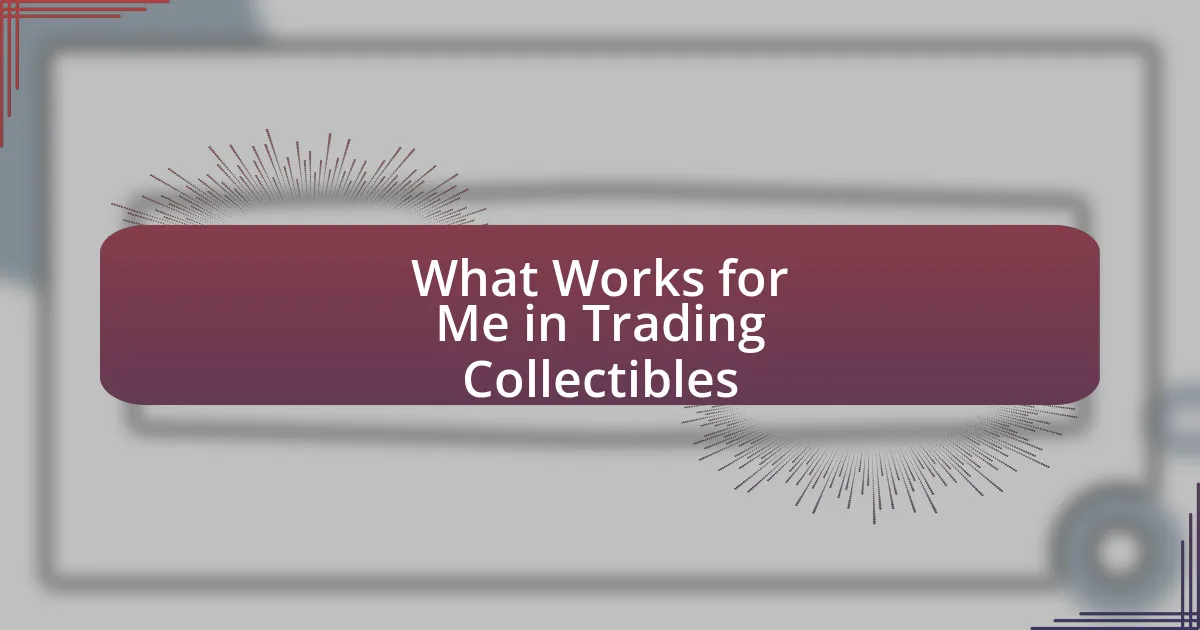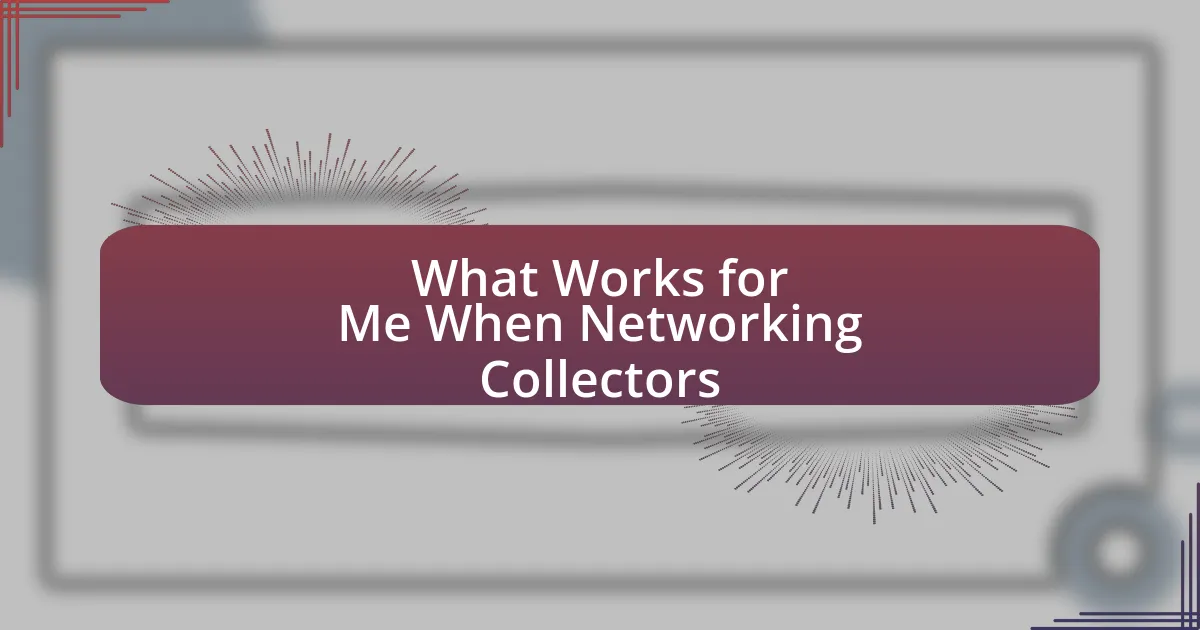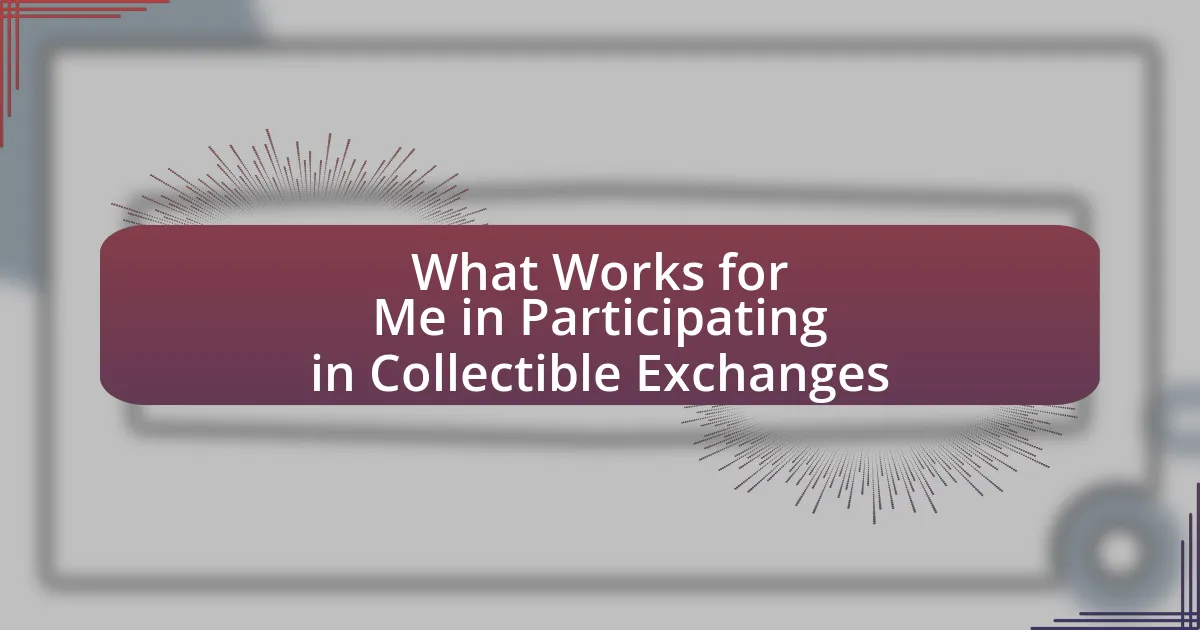Key takeaways:
- Focus on the condition of vintage toys, as it significantly influences their value and desirability among collectors.
- Researching toy value involves checking online marketplaces, engaging with collector forums, and utilizing price guides and social media trends.
- Effective storytelling and personalized marketing, including social media and email newsletters, can enhance customer engagement and boost sales.
- Proper shipping and handling are crucial to maintain toy condition, and clear communication about shipping times builds customer trust.
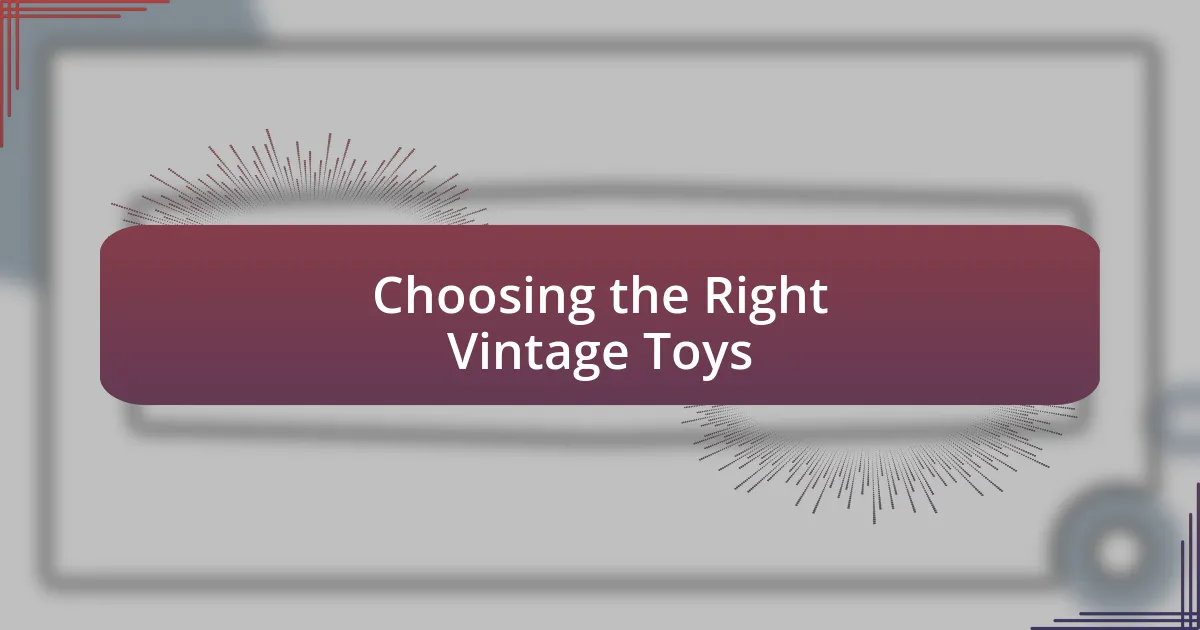
Choosing the Right Vintage Toys
When I first started selling vintage toys, the sheer variety was overwhelming. I quickly learned to focus on what truly excited me—specific brands, eras, or styles. This passion not only kept me motivated but also connected me with buyers who appreciated the same things.
One piece of advice I often share is to pay attention to condition. I remember stumbling upon a near-mint condition action figure at a flea market that was just waiting for a new home. It sold almost instantly for a great price because collectors are often willing to pay more for toys that are in excellent shape. Have you ever thought about how much a toy’s condition can influence its value and desirability?
Trends can also play a significant role in choosing the right vintage toys. I’ve noticed spikes in interest around certain themes, like retro games or toys from beloved movies. So, staying informed about what’s hot in the collector community can lead to informed purchases that yield better sales down the line. How do you keep your finger on the pulse of these trends? It’s a game of patience and research, but oh, is it rewarding when the right toy finds its way to the right buyer!
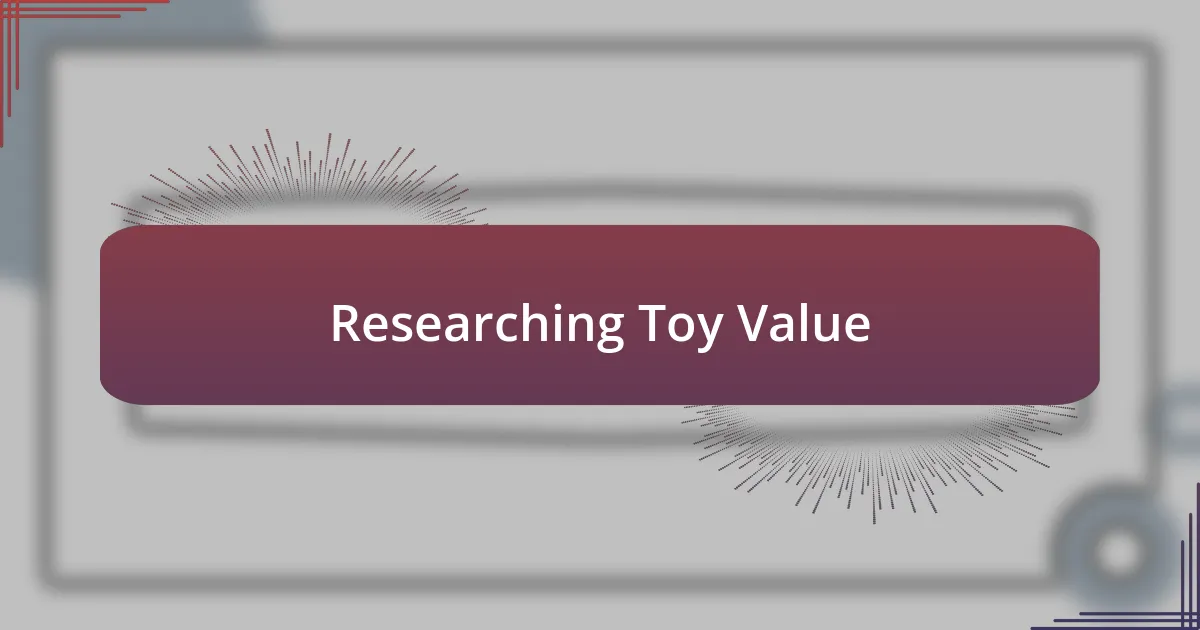
Researching Toy Value
Researching the value of vintage toys can be an enlightening experience. I remember when I first stumbled upon an old Star Wars toy at a garage sale. I thought it was just a relic of my childhood, but after some quick online research, I discovered its value was significantly higher than I expected. It sold for much more than I anticipated, and that taught me the importance of thorough research before putting a toy on the market.
Here’s what I typically consider when researching toy value:
- Online Marketplaces: Websites like eBay provide a wealth of information; I often check completed listings to see what similar items have sold for recently.
- Collector Forums: Engaging with fellow collectors can provide insights that you won’t find listed anywhere; hearing first-hand accounts can sometimes reveal trends or hidden gems.
- Condition Guides: I’ve found resources that catalog the grading of toys, letting me assess if mine ranks as near-mint, excellent, or just good enough.
- Price Guides: Annual price guides are valuable; they give a solid baseline for understanding shifts in toy values.
- Social Media Trends: Platforms like Instagram and TikTok are great for spotting what’s currently hot among collectors as new trends can emerge quickly.
These steps have made my journey not just about selling but also about truly appreciating the unique stories behind each toy.
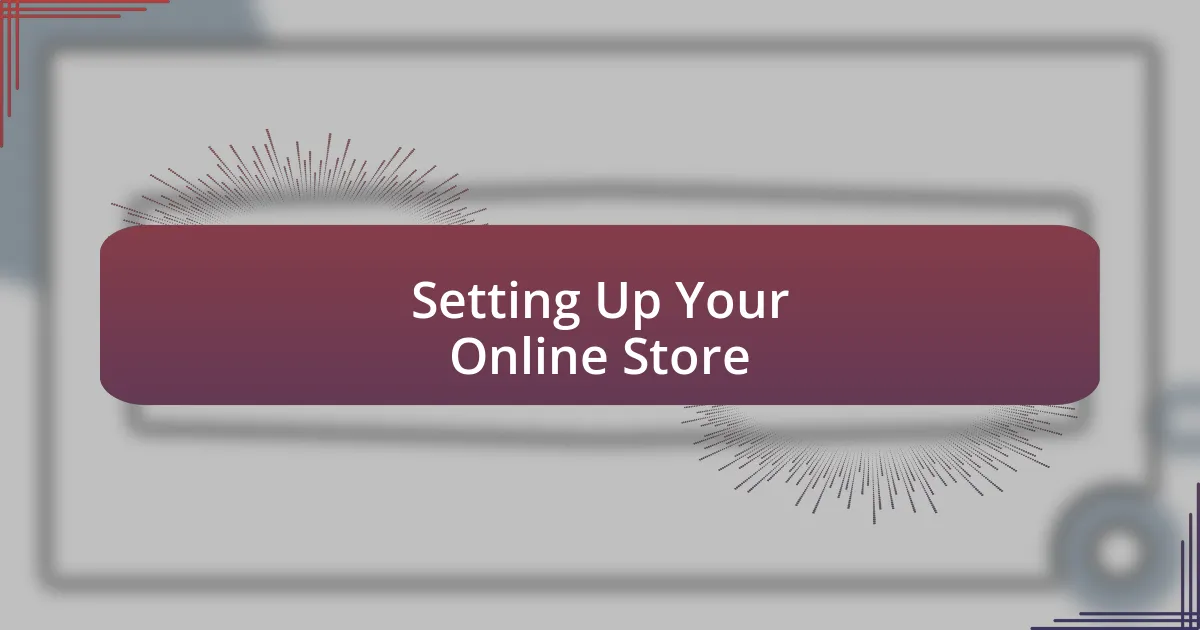
Setting Up Your Online Store
Setting up your online store is a critical step in the vintage toy-selling journey. I remember the excitement I felt when I first launched my shop. It was exhilarating, but I quickly learned that the platform selection matters greatly. Each marketplace, be it Etsy, eBay, or a personal website, has its unique audience and features. For instance, I noticed how Etsy attracts a more artsy crowd, while eBay caters to a wider audience, which I found beneficial when listing diverse toys.
When designing your store, pay attention to presentation. A clean layout with high-quality photos can make all the difference. I used to underestimate the power of visuals until I realized that detailed images of my vintage toys significantly boosted sales. Buyers want to see every angle. Additionally, ensuring clear descriptions brings buyers’ trust and encourages them to make that purchase. It’s similar to how I try to describe my toys’ histories. For example, sharing a personal story about a childhood memory connected to a toy often resonates with potential buyers.
Pricing your items can be challenging too. I remember struggling with this at first. The right price should reflect both the market value and your emotional connection to the item. This balance is crucial and can take some time to perfect. I learned to check similar listings, but I also reflected on how special an item was to me personally. This dual approach allowed me to set prices that felt fair and appealing to buyers.
| Platform | Audience |
|---|---|
| Etsy | Arts and crafts enthusiasts; unique handmade or vintage items |
| eBay | Broad audience; auction and immediate sale options |
| Personal Website | Brand loyal customers; flexibility in branding and design |
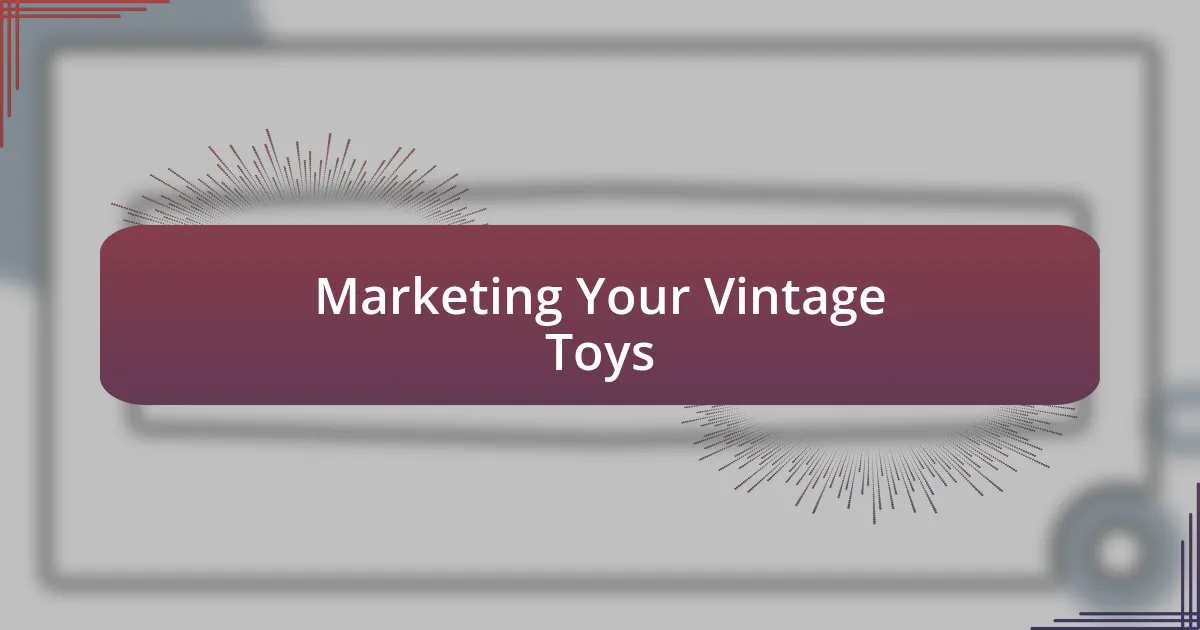
Marketing Your Vintage Toys
Marketing vintage toys is all about storytelling. I recall the time I shared the brief history of a classic G.I. Joe figure I had for sale. I included details about its original release and how it sparked joy in my childhood. Almost immediately, that listing caught fire, and I learned that potential buyers connect emotionally with the narrative behind each toy. Is there a unique story behind any of your toys?
Social media has also been a game-changer for me in promoting my vintage treasures. Platforms like Instagram and Facebook allow for visual storytelling, reaching a broad audience. I started posting photos of my toys in creative settings, and I noticed how engaging captions could draw people in. I even ran a small contest once, asking followers to share their favorite vintage toy memories for a chance to win a piece from my collection. The response was incredible, creating a real sense of community around my shop.
Email marketing shouldn’t be overlooked either. Sending out a newsletter has become an essential part of my strategy. I ensure it’s not just product-focused; I share tips for collectors and exciting vintage toy news. This approach has helped build trust and maintain connections with my customers. When was the last time you reached out to your audience? It could make a world of difference.
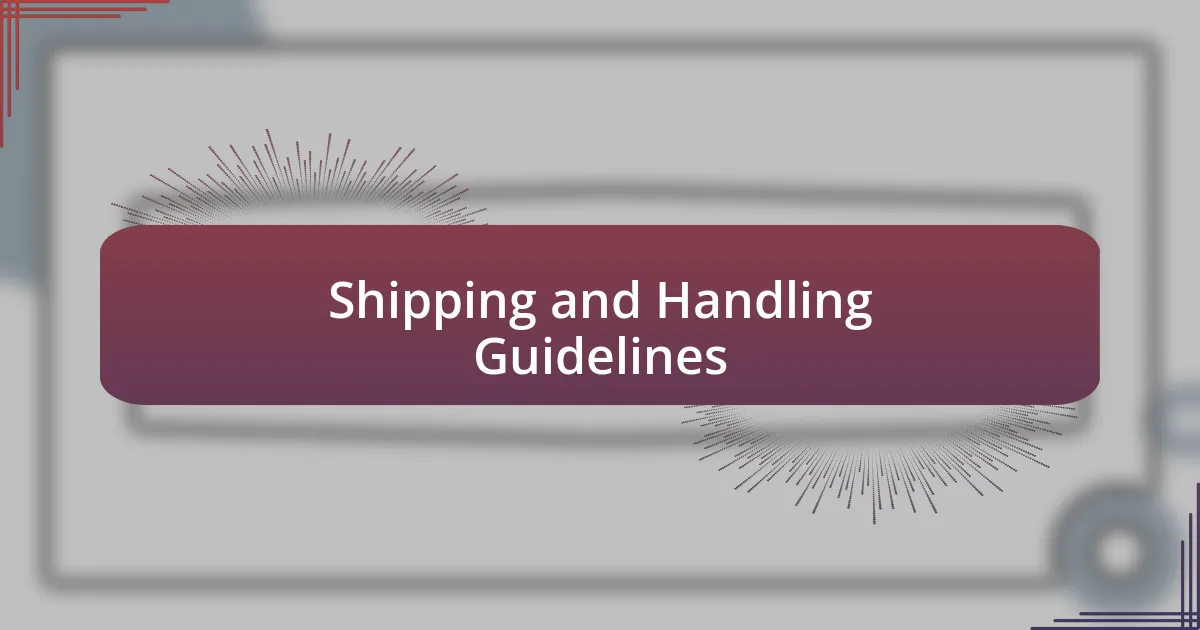
Shipping and Handling Guidelines
Shipping vintage toys requires careful consideration to ensure they arrive in perfect condition. I learned early on that the right packaging makes a significant difference. Once, I shipped a rare toy without enough cushioning, and it arrived damaged, which was both disappointing and frustrating for me and the buyer. I now use plenty of bubble wrap and sturdy boxes to provide a protective hug for my toys during transit.
When it comes to selecting shipping methods, I typically offer options to my customers. I find that providing choices, like standard and expedited shipping, caters to different needs and budgets. For instance, one holiday season, I had a buyer desperate to receive a vintage toy in time for a gift. By offering expedited shipping, I was able to meet their request and was rewarded with a heartfelt thank-you message that brightened my day.
Lastly, keeping the handling time to a minimum builds confidence with potential buyers. After a few experiences where longer processing times led to anxious messages, I streamlined my approach. I aim to ship items within two business days, and I always communicate any potential delays. This transparency not only enhances the customer experience but ensures that I maintain a trustworthy reputation. Remember, how you handle shipping can be just as important as the story behind the toy itself.

Engaging with Customers
Engaging with customers is an essential part of selling vintage toys, and I’ve found that personalized communication goes a long way. When a buyer inquired about the history of a particular toy, I took the time to share its story, revealing the charm and nostalgia behind it. The response was overwhelming; they felt a connection to the item and ended up purchasing it, which reminded me how a little extra effort can foster loyalty.
I also make it a point to follow up with customers after their purchase. One memorable instance involved a buyer who received a vintage playset that brought back childhood memories. After they expressed their joy, I suggested ways they could display it as a centerpiece in their home. Their gratitude, expressed through a glowing review, reinforced my belief that these interactions enhance the overall buying experience.
Additionally, asking for feedback has been pivotal in my customer engagement strategy. After sending out a toy, I reach out to customers with a quick message: “How did your little one enjoy the toy?” Their responses not only provide me with valuable insights for improvement but also make them feel valued and heard. It’s fascinating how such simple questions can transform a transactional relationship into a more meaningful connection.

